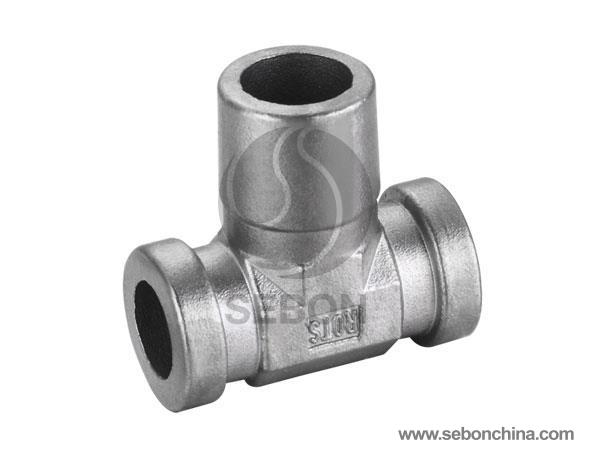
- [email protected]
- 0086-371-86560898

Contact us now for any need or questions about our company or product.


Detailed description of the characteristics and differences of various casting
1. Casting can also be divided into gravity casting and pressure casting liquid metal casting process. Gravity casting is the process refers to the liquid metal in the earth under the action of gravity, into the mold, also known as casting. The generalized gravity casting including sand casting, metal casting, investment casting, clay mold casting; narrow sense of the gravity casting metal casting refers specifically. Pressure casting is the process of the liquid metal into the mold under other external forces (excluding gravity). The generalized pressure casting including pressure die casting machine casting and vacuum casting, low pressure casting, centrifugal casting; the narrow defined pressure casting refers specifically to the metal pressure die casting machine casting, referred to as die-casting. Sebon precision casting plant has long been engaged in sand gravity casting and metal type. Several casting process is the most common non-ferrous metal casting, is the relative price of the lowest.
2. Sand casting to sand as the main modeling material, making the traditional mold casting process. The sand generally use gravity casting, low pressure casting, centrifugal casting process can also be used when there are special requirements. The wide sand casting adaptability small pieces, large, simple pieces, complex piece, single piece, large quantities can be used. Sand casting mold, more wood, commonly known as wood mold. Sebon precision casting plant is easy to change the wood mold deformation, easily damaged ills In addition to the single-piece production of sand castings, change all the high dimensional accuracy and long life aluminum mold or resin mold. Although the price has increased, but still higher than the metal casting mold is much cheaper, especially in small quantities and large production, the price advantage. In addition, sand refractoriness higher than the metal, and thus the higher melting point materials such as copper alloys and ferrous metals, the use of this process. Sand casting, however, there are some shortcomings: because each sandy mold can only be cast once obtained casting mold that is damaged, you must re-shape, sand casting production efficiency; another because the whole nature of the sand soft rather porous, so the lower sand casting, casting dimensional accuracy and the surface is rough. However, years of accumulated technology Sebon precision casting factory set has been greatly improved sand casting surface condition, comparable to its effect after shot blasting and metal castings.
3. Metal casting is the production of heat-resistant alloy steel casting hollow cast mold of modern technology. Metal type using either gravity casting, pressure die casting can also be used. Metal mold mold can be used repeatedly, each pouring a liquid metal, obtained castings, very long life, and high production efficiency. Metal castings is not only dimensional accuracy is good, smooth surface, and in the case of pouring the solution of the same metal, the casting strength higher than the sand of more not easily damaged. Thus, in the mass production of non-ferrous metals, castings, as long as the the casting material‘s melting point, however, is generally preferred metal casting. Metal casting, however, there are some shortcomings: heat-resistant alloy steel and made it a hollow cavity machining are more expensive, so the costs of metal-mold and die casting mold costs, but overall it is cheaper than the more. Allocated to the cost of each product on the mold is obviously too high for small batch production, generally is not easy to accept. Metal-mold mold material size and cavity machining equipment, casting equipment capacity constraints, particularly large castings powerless. Therefore rarely used in small quantities and large production of metal casting. In addition, the metal mold, although the use of heat-resistant alloy, but the heat capacity is still limited, generally used for aluminum, zinc alloy, magnesium alloy casting, copper alloy casting has been rarely used, while for black metal casting even less. Sebon precision casting factory metal mold all of their own design, to manufacture, and therefore a more timely manner to provide customers with inexpensive, the applicable quality mold.
4. The die-cast metal pressure die casting machine casting, is the highest productivity casting process. Die casting machine is divided into two types of hot chamber die casting machine and cold chamber die casting machine. Hot chamber die casting machine high degree of automation, less material loss, higher production efficiency than the cold chamber die casting machine, mechanical heat-capacity constraints, there can only be used for the casting of zinc alloy, magnesium alloy of low melting point materials production . Today‘s widespread use of aluminum die casting, high melting point, it is only in the cold chamber die casting machine production. Die casting the main characteristics of the liquid metal in the high pressure, high speed filling the cavity, and molding under high pressure, solidification, the inadequacies of the die casting is: Because the liquid metal in the high pressure, high speed, the process of filling the cavity, inevitably entrapped air in the cavity inside the casting, forming Blowhole should not heat-treated aluminum die casting, zinc alloy die castings should not surface spray (but can be painted). Otherwise, the internal porosity of castings for the heating of the above-described processing, to thermal expansion the resulting castings deformation or bubbling. In addition, die casting, mechanical cutting allowance should also be made of small, generally about 0.5mm, can help reduce the weight of the casting, to reduce the amount of cutting to reduce costs and avoid penetrating the dense surface layer, exposing Blowhole, resulting in workpiece scrapped.